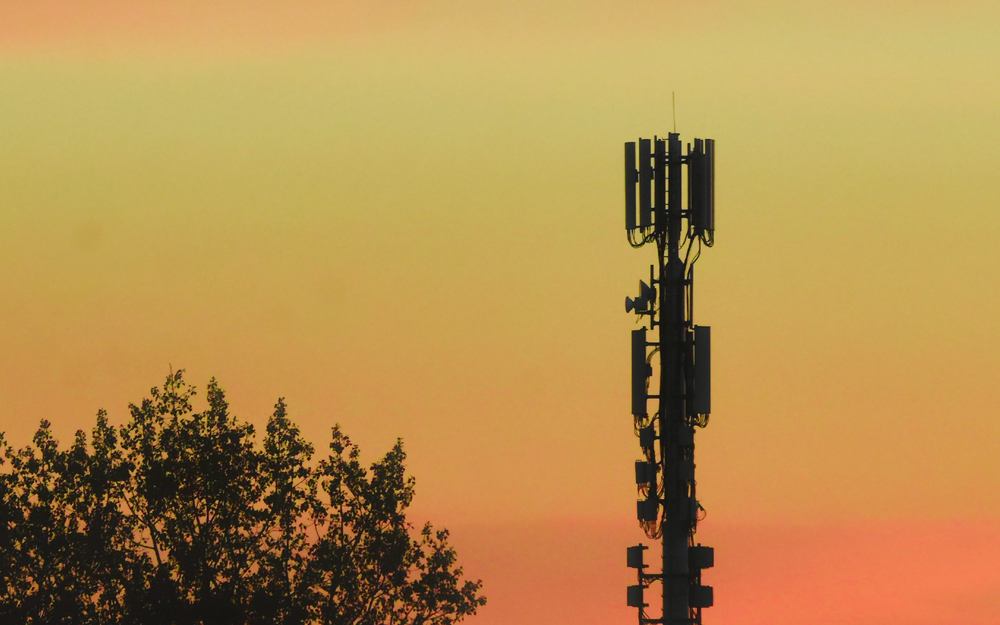
Could you come home one day to discover that a 5G tower is being built in your front yard?
For a group of Indianapolis homeowners, the answer was “yes.”
Local media reported this summer that some Indiana homeowners had come home to find a 5G tower being built essentially in their front yards. One homeowner expressed shock as they had no notice that a large pole would be placed in the right of way of their front yard. As they investigated the matter, they quickly discovered that they had no recourse to have it removed.
What is 5G?
5G refers to fifth generation mobile network and is supposed to deliver faster more reliable data speeds. This means that you will be able to, for example, download a movie faster without buffering, join a zoom call so you can work remotely, and program your smart refrigerator from your smartphone. 5G and Wi-Fi currently coexist but 5G can be used as an alternative if it’s available. The main 5G disadvantages are that it is offered in limited areas, it requires several towers where it is available and some believe that it can cause cancer. 5G is made possible by wireless antennas and other equipment called “small cell facilities”. The small cell facilities supplement cellular networks and facilitate the 5G deployment; they require a support structure and a single pole in most cases called a “tower” to transmit signals properly. You might see them attached to a utility pole or the 5G company may construct a new pole to support the small cell facility. Towers can reach up to fifty feet (50’) tall.
Where are 5G towers allowed?
The federal government allows telecommunication providers to place their 5G towers in rights of way or other city-owned property. Rights of way are generally found along roads, whether on main streets or in neighborhoods. The right-of-way area of a neighborhood is usually found between the curb and the sidewalk of each property.
Who regulates 5G?
The Federal Communications Commission (FCC) regulates the telecommunications industry. Federal law gives companies discretion to place their poles where they see fit to implement 5G. Many people get upset at their local government for allowing the placement of the towers in their neighborhoods, but in Indiana, local governments are prohibited from regulating most aspects of 5G towers and cannot prohibit the 5G tower from being placed in the right of way.
Local governments have limited, control of 5G towers. Municipalities may require a permit for (1) the construction of new support structures, (2) substantial modification of a support structure, (3) collocation of wireless facilities on an existing structure, and (4) construction, placement, and use of small cell facilities. If the municipality has an existing ordinance that restricts its right of way for underground or buried utilities in residential areas, a communications provider may be required to apply for a waiver and send notice to a neighborhood association that a new pole is to be placed in their neighborhood. The neighborhood and the municipality can work together to have a say in the preferred location of the new poles and what the pole should look like.
How can you protect your property?
Check your property and see where the right of way is located. Check with your local government and ensure that they have passed the required ordinances. Sign your neighborhood up for notifications with your local government. Stay involved in the process if you receive notification and communicate regularly with your elected officials.
The Federal Communication Commission has stated that “supporting the deployment of 5G and other next-generation wireless services through smart infrastructure policy is critical” and that they are “committed to doing (their) part to help ensure the United States wins the global race to 5G to the benefit of all Americans”. Indiana 5G Zone recently announced their intent to launch a $2 million grant program to accelerate 5G-related projects around the state. 5G isn’t going anywhere and the federal government is making rules and enacting laws that ensure it will continue to grow. Make sure you know your rights.
The government and public utilities do have certain rights related to the right-of-way easements of private property. However, if the government or public utility requires a portion or all of your land in addition to the right-of-way easement for a public project that is when you need an eminent domain attorney. Our firm’s attorneys are experienced in eminent domain law and help landowners protect their rights and maximize compensation in land acquisition transactions. There is no cost for a case evaluation. Contact Cohen & Malad, LLP to learn more.




